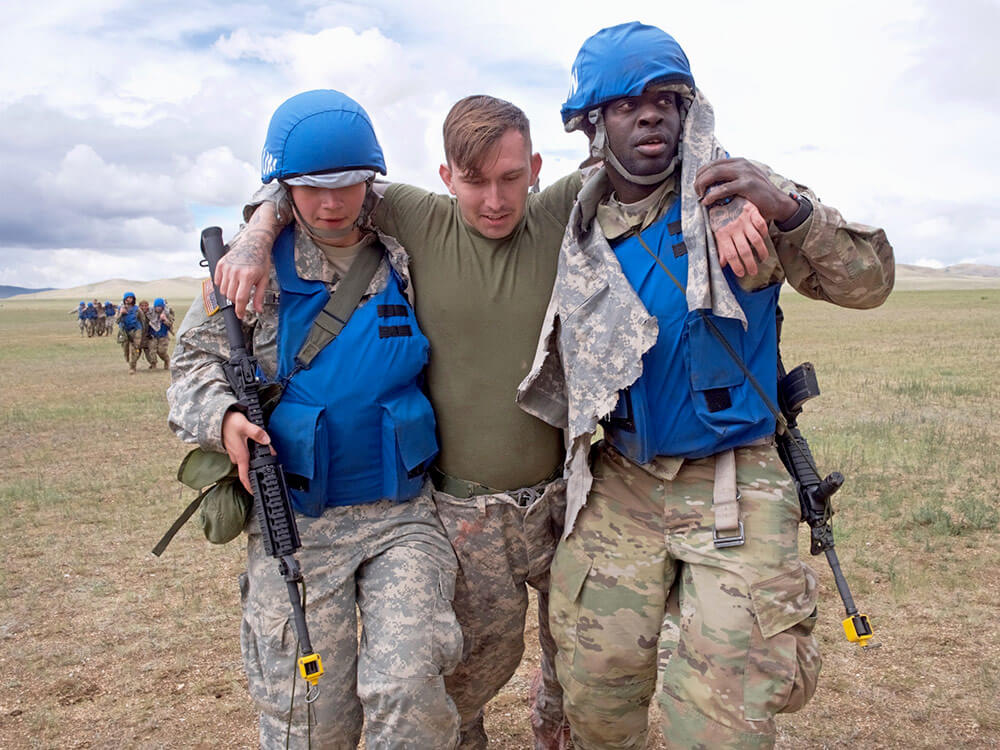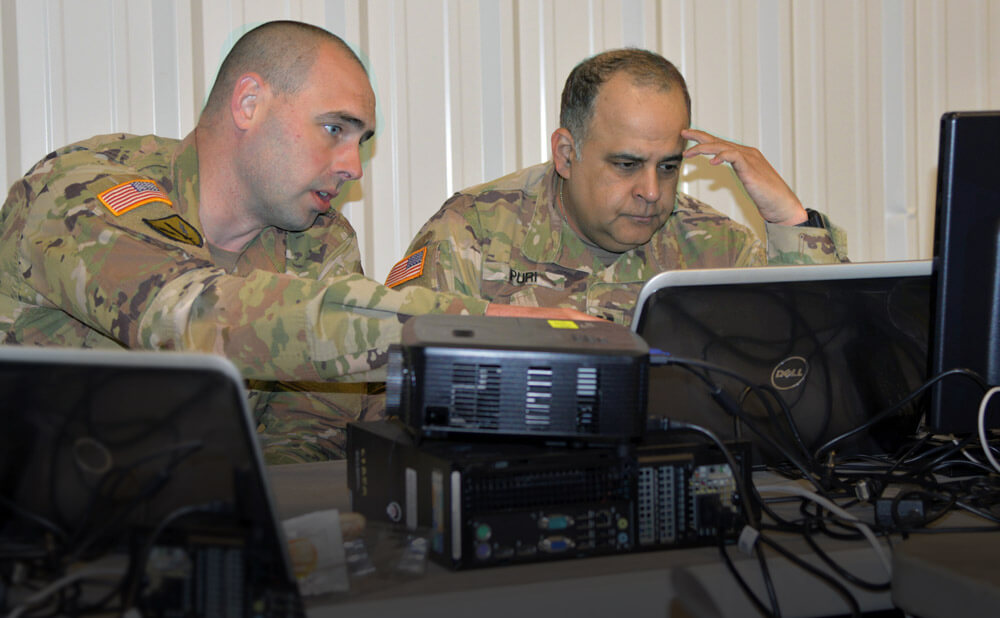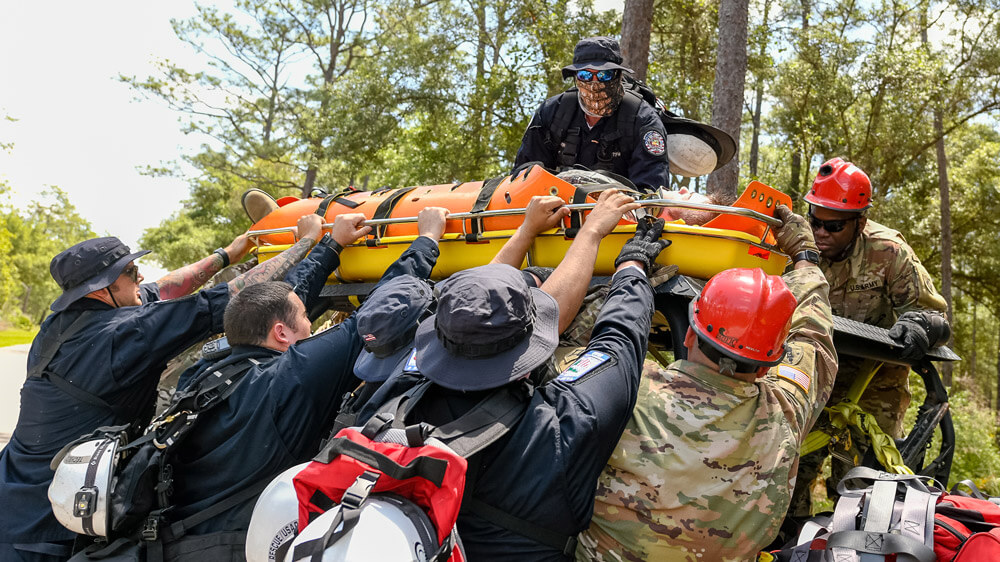The typical adult human body contains five liters of blood. Responsible for transporting oxygen and nutrients to the cells and removing waste on its return trip through miles of arteries, veins and capillaries, blood is life.
Because of the heavy consequences of blood loss, SSG Stephen Behrens, a medical detachment training noncommissioned officer (NCO) for the Alaska Army National Guard, knows that stopping the bleeding is serious business – it’s about saving service members’ lives.
SSG Behrens, other U.S. medical personnel and their Mongolian Armed Forces counterparts were instructors for the Tactical Combat Casualty Care session during Exercise Khaan Quest 2018, held this past June at Five Hills Training Area, Mongolia.
Khaan Quest, a multinational exercise co-sponsored by U.S. Pacific Command, is hosted annually by the Mongolian Armed Forces. This year’s exercise marked the 16th anniversary of this training event.
U.S., Mongolian Armed Forces and 16 other nations participated in the Tactical Combat Casualty Care lane – one course in a round-robin training event that included sessions such as crowd control and convoy operations.
SSG Behrens said medical personnel can’t be everywhere, and it’s often up to service members of every job description to stabilize a wounded comrade before they can be evacuated to medical care.
“Combat Casualty Care is the method we use to sustain life on the battlefield, then get them from the point of injury to [higher levels of] care,” he said.
The MARCH algorithm, which stands for massive bleeding, airway control, respiratory support, circulation and hypothermia prevention, is essential to the training.
SSG Behrens said the best way to stop arterial bleeding, signified by bright red blood, is to fit a tourniquet above the wound. In the training session, students practiced to fit the device – a simple nylon belt-like piece that compresses blood vessels to stop the bleeding – on partners.
2LT Sonya Hood, platoon leader for the 297th Regional Support Group contingent, winced when platoon member PFC Jessica Shields fit the officer with the tourniquet, cranking the pressure on 2LT Hood’s femoral artery. SSG Behrens said Tactical Combat Casualty Care measures can be uncomfortable for patients, but they save lives.
“MARCH allows us to greatly increase the survivability of traumatic injuries, and it ultimately allows Soldiers to go home alive,” SSG Behrens said.
By SGT David Bedard, Alaska National Guard



